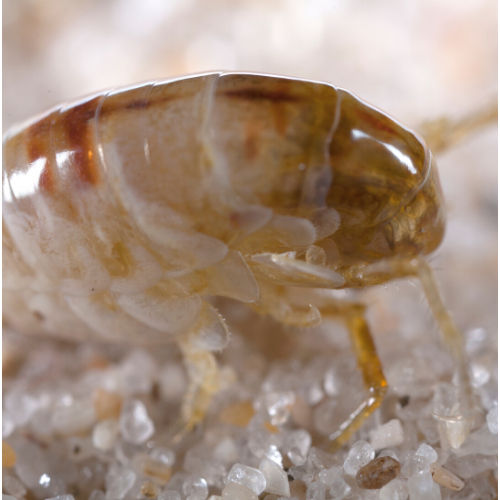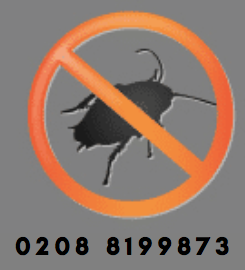Flea Control in Merton: Effective Strategies for a Flea-Free Home
Introduction: Dealing with a flea infestation can be a nuisance, as these tiny parasites can cause discomfort and irritation to both humans and pets. Merton offers professional flea control services to effectively eliminate fleas from your home and prevent their return. In this article, we will discuss the importance of flea control, common signs of infestation, and effective strategies offered in Merton.

Understanding the Importance of Flea Control: Fleas are not just a bother; they can pose health risks to humans and animals. Flea bites can cause itching, allergic reactions, and skin irritations. Moreover, fleas can transmit diseases and parasites, such as tapeworms and Bartonella bacteria. Effective flea control is crucial to protect your family and pets, maintain a hygienic living environment, and prevent the spread of infestation.
Recognizing Signs of Flea Infestation: Detecting a flea infestation early is important for effective control. Look out for the following signs:
- Frequent itching and scratching: If you or your pets are experiencing persistent itching and scratching, especially around the lower legs and ankles, it may indicate flea bites.
- Presence of fleas or flea dirt: Fleas are small, dark-brown insects that can be observed moving quickly through fur or hopping on surfaces. Flea dirt, which looks like black pepper or specks of dirt, is flea excrement and can be found on pets or in their bedding.
- Pets showing signs of flea allergy dermatitis: Some pets may have an allergic reaction to flea saliva, resulting in intense itching, hair loss, and skin irritation. Excessive grooming or constant scratching may indicate this condition.
- Flea bites on humans: Flea bites on humans often appear as small, red, itchy bumps, usually in clusters or rows, typically on the lower legs or around the waistline.
Professional Flea Control Solutions in Merton: Merton offers professional pest control services equipped with the expertise and tools to effectively eliminate fleas from your home. Here are some strategies they may employ:
- Inspection and Identification: Certified technicians will conduct a thorough inspection of your property to identify areas of flea activity, locate potential breeding sites, and assess the extent of the infestation. This assessment helps in developing a targeted treatment plan.
- Treatment for Pets: Flea control involves treating both your home and pets. Pest control professionals may recommend appropriate flea treatment products for your pets, such as spot-on treatments, oral medications, or flea collars. These products help eliminate fleas from your pets and prevent re-infestation.
- Indoor Treatment: Pest control services will apply targeted insecticides to treat indoor areas where fleas are likely to be present, such as carpets, rugs, upholstery, pet bedding, and crevices. Special attention will be given to high-risk areas where pets spend a significant amount of time.
- Outdoor Treatment: If necessary, outdoor areas may also be treated to eliminate fleas. Pest control professionals may apply insecticides to the yard, focusing on areas where pets rest or play. This helps prevent fleas from infesting your outdoor spaces and reduces the risk of re-infestation.
- Vacuuming and Cleaning: Thorough vacuuming of carpets, rugs, and upholstered furniture helps remove flea eggs, larvae, and pupae. Pest control professionals may recommend frequent vacuuming and proper disposal of the vacuum bag to prevent re-infestation. Additionally, they may provide guidance on proper cleaning practices to eliminate flea dirt and eggs from the environment.
- Follow-up Visits and Monitoring: After the initial treatment, follow-up visits may be scheduled to evaluate the effectiveness of the treatment, address any remaining concerns, and make
Frequently asked questions (FAQs) about flea control in Merton
- Q: How do I know if I have a flea infestation? A: Signs of a flea infestation include frequent itching and scratching, presence of fleas or flea dirt on pets or in their bedding, pets showing signs of flea allergy dermatitis, and flea bites on humans characterized by small, itchy bumps.
- Q: Can fleas harm my pets or family? A: Fleas can cause discomfort, itching, and skin irritations to both pets and humans. They can also transmit diseases and parasites, making effective flea control important for the health and well-being of your family and pets.
- Q: Can I control a flea infestation on my own? A: While some over-the-counter products may provide temporary relief, professional flea control is generally more effective for complete eradication. Professional pest control services have the expertise and tools to address the infestation at its source and prevent re-infestation.
- Q: Are the treatments safe for my family and pets? A: Yes, professional pest control services prioritize the safety of your family and pets. They use approved insecticides and follow strict application guidelines to minimize any risks. However, it is important to follow the instructions provided by the technicians.
- Q: How long does a flea treatment take? A: The duration of a flea treatment depends on factors such as the severity of the infestation, the size of the property, and the treatment methods employed. Pest control professionals will provide you with an estimated timeframe based on your specific situation.
- Q: Can fleas come back after the treatment? A: While a professional treatment significantly reduces the flea population, it is possible for new fleas to enter your home if preventive measures are not followed. Pest control professionals can provide guidance on how to prevent future infestations, including proper pet care, regular cleaning, and monitoring.
- Q: How soon can I expect results after the flea treatment? A: You should start noticing a reduction in flea activity shortly after the treatment. However, complete eradication may take time, depending on the severity of the infestation and the treatment methods employed. Pest control professionals will guide you on what to expect.
- Q: Do I need to treat my pets for fleas? A: Treating your pets for fleas is an essential part of flea control. Professional pest control services may recommend appropriate flea treatment products for your pets to eliminate fleas and prevent re-infestation. Consult with your veterinarian for suitable options.
- Q: Can fleas survive outdoors? A: Yes, fleas can survive outdoors, especially in areas where pets spend time resting or playing. Outdoor treatment may be recommended by pest control professionals to eliminate fleas from your yard and reduce the risk of re-infestation.
- Q: How can I prevent future flea infestations? A: Preventive measures include regular grooming and flea treatments for pets, frequent vacuuming, proper cleaning of pet bedding, and maintaining good hygiene practices. Pest control professionals can provide specific recommendations to make your home less attractive to fleas and minimize the risk of future infestations.
If you have further questions or concerns about flea control in Merton, do not hesitate to reach out to professional pest control services. They will provide you with expert advice and tailored solutions to address your specific flea infestation.
Flea Communities: The Lives and Behaviors of Fleas
Fleas are small, wingless insects that belong to the order Siphonaptera. While they are typically associated with parasitizing animals, fleas also have their own communities with unique behaviors and adaptations. Let’s explore the lifestyle and characteristics of flea communities:
- Host Dependency: Flea communities are closely tied to their hosts. Adult fleas require the blood of mammals or birds to survive and reproduce. Each species of flea typically specializes in infesting specific hosts, such as dogs, cats, rodents, or birds. Flea communities thrive by exploiting their host’s blood as their primary food source.
- Communal Living: Flea communities often exist in areas where their hosts frequent, such as nests, burrows, or bedding. These locations provide the fleas with easy access to their hosts for feeding and reproduction. The proximity to hosts also facilitates the spread of fleas between individuals and helps maintain the community’s population.
- Reproductive Potential: Fleas have a remarkable reproductive capacity. Females can lay hundreds of eggs throughout their lifespan, which can vary depending on the species. These eggs are typically laid on the host but can also be deposited in the environment, such as in bedding or cracks and crevices. This high reproductive potential contributes to the growth and sustainability of flea communities.
- Life Cycle and Development: Fleas undergo a complete metamorphosis, progressing through four life stages: egg, larva, pupa, and adult. The eggs hatch into larvae, which are small, legless, and worm-like. Flea larvae feed on organic debris and the feces of adult fleas. After several molts, the larvae spin cocoons and enter the pupal stage, where they undergo metamorphosis before emerging as adult fleas. The life cycle duration can vary depending on environmental conditions.
- Aggregations and Nests: Flea communities tend to aggregate in specific areas to enhance their chances of finding hosts. These aggregations can occur in animal nests, bedding, carpets, or other warm and protected environments. The presence of multiple fleas in these areas increases the likelihood of successful reproduction and survival.
- Jumping Adaptations: Fleas are renowned for their extraordinary jumping ability. They possess muscular hind legs that allow them to leap remarkable distances relative to their small size. This adaptation enables fleas to move quickly between hosts, escape potential threats, and navigate their environment efficiently.
- Host Finding and Feeding: Flea communities rely on various sensory cues to locate and feed on their hosts. They are adept at detecting heat, carbon dioxide, and vibrations emitted by potential hosts. Once on a host, fleas use piercing mouthparts to penetrate the skin and feed on blood. Their saliva contains anticoagulant compounds to prevent blood clotting, facilitating continuous feeding.
- Adaptations for Survival: Fleas have developed several adaptations to survive in their environments. Their bodies are flattened laterally, allowing them to move easily through fur or feathers. They possess strong, curved claws that enable them to grip onto their hosts. Fleas are also highly resilient and can enter a dormant state in their cocoons, allowing them to survive for extended periods without feeding.
- Interactions with Hosts: While fleas rely on their hosts for survival, the presence of fleas can cause discomfort and health issues in animals. Flea bites can lead to itching, allergic reactions, and the transmission of diseases. Host grooming behaviors, such as scratching and biting, play a role in controlling flea populations.
Understanding the behavior and adaptations of flea communities is crucial for effective flea control. Professional pest control services employ strategies that target the different life stages of fleas, disrupt their

